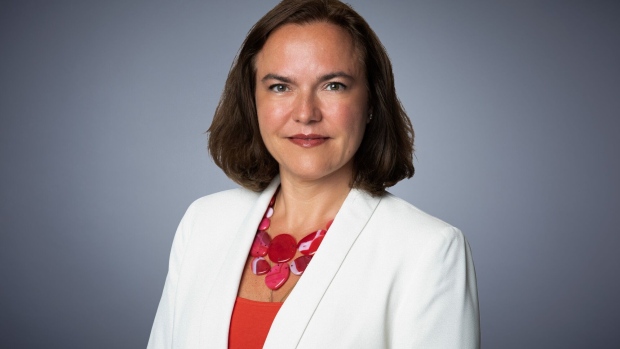Mar 22, 2023
Lehman Veteran Buys Risky Bank Debt as Recession Looms
, Bloomberg News

(Bloomberg) -- Pilar Gomez-Bravo had a front row seat at Lehman Brothers as it crashed and became the emblem of a financial crisis that swept through the world.
Like many survivors of 2008, the co-chief investment officer for fixed income at MFS Investment Management can’t help but see parallels in the collapse of three US banks and UBS Group AG’s shotgun wedding with Credit Suisse Group AG.
But there’s a big difference this time, contends Gomez-Bravo, whose benchmark fund has outperformed 95% of peers this year. Now, central banks are swooping in at the first sign of trouble to cement over cracks before they become systemic.
And that’s giving the London-based manager of about $4 billion of assets confidence to buy bombed-out bank debt that’s seen record declines in value over the past week. She’s been scooping up so-called Additional Tier 1 or AT1 bonds, after Credit Suisse’s writedown of the notes sparked a fire sale of the debt globally.
“This time around its clear central banks are much more willing to stem issues at first sign of distress and not worry about moral hazard,” said Gomez-Bravo in an interview.
There’s another critical difference between the recent turmoil and 2008. Banks are not currently awash in bad loans. Instead, they are threatened with duration risk from safe government debt — paper losses that can turn into realized losses if banks are forced to sell the assets to cover deposit withdrawals. For big banks at the core of the financial system with diverse assets, such a fire sale and funding crunch are remote risks, according to Gomez-Bravo.
She sees an imminent recession ahead, as the tightening of credit conditions seeps through to other sectors, but expects the turbulence in the banking sector to be far more contained than it was during the global financial crisis.
That’s made Gomez-Bravo comfortable taking advantage of the market dislocations in the financial sector, while steadily derisking the rest of her portfolio in preparation for an upcoming downturn. Her exposure to high-yield assets has been whittled down to 15% from 25% a year ago and she’s been loading up on quality, favoring European investment-grade credit for its cheap valuations and supranational bonds.
Her MFS Global Opportunistic Bond Fund has returned 2.9% since the start of the year, outperforming 95% of peers, according to data compiled by Bloomberg.
When Lehman went bust, the mother of four was a portfolio manager at its investment arm. Prior to that, she was a senior credit analyst on Lehman’s sellside. During the build up to the crisis in 2007, Gomez-Bravo turned cautious on the health of the market, as leverage levels signaled a sharp slowdown ahead.
Gomez-Bravo’s past experience is helping her to remain steely-nerved in the face of the market’s current “manic and panic” behavior. As other fund managers run to cash in the hunt for safety, Gomez-Bravo is holding less than 10% of her portfolio in money markets, preferring to use dollar-swap alchemy to turn a 2% to 3% yield from three- to four-year Japanese government bonds.
“Active managers live for volatility and dispersion,” she said. “These stormy waters will provide opportunity.”
©2023 Bloomberg L.P.






